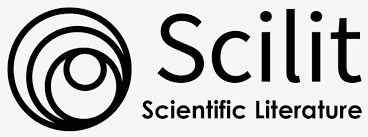Respons Pengguna Instagram terhadap Periklanan Paid Promote di Instagram dengan Metode CRI Berkonsep AISAS
DOI:
https://doi.org/10.14421/jiska.2022.7.2.100-110Keywords:
Instagram, Paid Promote, AISAS, CRI, ResponsAbstract
Instagram is a social media that has a shopping feature. Instagram can be used for digital advertising, and among them is paid promotion. Paid promotion is a service to promote goods/services on social media. This service offers advantages such as a broad market segment, low cost, and easy technical implementation. Many online shops are willing to spend a lot of money to be promoted. Unfortunately, online shop owners usually do not know how Instagram users respond when they see a paid promotion. Therefore, the purpose of this study is to find out how Instagram users respond to the paid promotion on Instagram. User response data was taken from a questionnaire, then analyzed using the CRI method with the AISAS concept by using 4 models: AISAS, AISS, AIAS, and AIS. As the result, four models showed the CRI is below 50% (AISAS: 2,8%; AIAS: 3%; AISS: 4,5%; AIS: 8,4%). Considering the result, the respondents do not give a good response to the paid promotion service.
References
Alfiansyah, R., & Listiani, E. (2016). Paid Promote as a Media Promotions (a Case Study of Paid Promote Miniinstaxpvj as Promotion Media in Instagram to Increase Desire Onlineshop Campaign). Prosiding Manajemen Komunikasi, 2(1), 157–162. https://doi.org/10.29313/.V0I0.3129
Alrifqi, M., Halim, J. P., Sari, A. F. P., & Rakhmawati, N. A. (2021). Respons Pengguna Instagram Terhadap Periklanan Paid Promote di Instagram: Final. https://doi.org/10.5281/ZENODO.5552459
Arifah, N. P., & Mustikarini, C. N. (2016). Paid promote Sebagai Media Promosi Produk Delicy dalam Meningkatkan Konsumen Potensial. Jurnal Performa, 1(3).
Bahri, R. A. (2012). Analisis pengaruh Endorser di Social Media terhadap pengambilan keputusan pembelian produk dengan metode AISAS: studi kasus Telkomsel. Universitas Indonesia.
Danisworo, M. C., & Sulhan, M. (2018). Pengaruh Personalisasi pada Iklan Aplikasi terhadap Sikap Pengguna (Survei Pengaruh Personalisasi pada Mobile Advertising terhadap Sikap Pengguna pada Iklan Aplikasi Instagram). Universitas Gadjah Mada.
Durianto, D. (2003). INVASI pasar dengan iklan yang efektif : strategi, program dan teknik pengukuran. Gramedia Pustaka Utama.
Ferwerda, B., & Tkalcic, M. (2018). You Are What You Post: What the Content of Instagram Pictures Tells About Users’ Personality. 2nd Workshop on Theory-Informed User Modeling for Tailoring and Personalizing Interfaces (HUMANIZE).
Malhotra, N., Krosnick, J., Sniderman, P., Stiglitz, J., Schneider, D., Bullock, J., Levendusky, M., & Popp, E. (2008). Completion Time and Response Order Effects in Web Surveys. Public Opinion Quarterly, 72(5), 914–934. https://doi.org/10.1093/POQ/NFN050
Pratama, D. R., Suhendra, A. A., & Aurachman, R. (2019). Efektivitas Iklan Jasa Paidpromote Pada Followers Akun Tumbler Line@ Indonesia Menggunakan Metode Customer Response Index Konsep Aisas. EProceedings of Engineering, 6(2).
Puspitasari, A. D. (2019). Efektivitas Pesan Iklan Endorsement Hp Spectre X360 pada Akun Instagram Ilustrator Andika Nugraha Berdasarkan Perhitungan Customer Response Index dengan Konsep AISAS. Universitas Atma Jaya.
Rakhmawati, N. A., Faiz, N. F., Hafidz, I., Raditya, I., Dinatha, P., & Suwignyo, A. (2021). Clustering student Instagram accounts using author-topic model. International Journal of Business Intelligence and Data Mining, 19(1), 70–79. https://doi.org/10.1504/IJBIDM.2021.115954
Simamora, B. (2004). Riset pemasaran : falsafah, teori dan aplikasi. Gramedia Pustaka Utama.
Sugiyama, K., & Andree, T. (2011). The Dentsu way : secrets of cross switch marketing from the world’s most innovative advertising agency. McGraw-Hill.
Sugiyono. (2019). Metode Penelitian Kuantitatif, Kualitatif, dan R&D (2nd ed.). Alfabeta.
Tasruddin, R., Pengajar, S., Jurusan, P., Komunikasi, I., Dakwah, F., & Komunikasi, D. (2017). Tren Periklanan Di Media Sosial. Jurnal Komodifikasi, 5(1), 15–20.
Downloads
Published
How to Cite
Issue
Section
License
Copyright (c) 2022 Bekti Cahyo Hidayanto, Jessica Patricia Halim, Aura Febriyanti Puspa Sari, Muhammad Alrifqi, Nur Aini Rakhmawati, Izzat Aulia Akbar

This work is licensed under a Creative Commons Attribution-NonCommercial 4.0 International License.
Authors who publish with this journal agree to the following terms as stated in http://creativecommons.org/licenses/by-nc/4.0
a. Authors retain copyright and grant the journal right of first publication with the work simultaneously licensed under a Creative Commons Attribution License that allows others to share the work with an acknowledgement of the work's authorship and initial publication in this journal.
b. Authors are able to enter into separate, additional contractual arrangements for the non-exclusive distribution of the journal's published version of the work (e.g., post it to an institutional repository or publish it in a book), with an acknowledgement of its initial publication in this journal.
c. Authors are permitted and encouraged to post their work online (e.g., in institutional repositories or on their website) prior to and during the submission process, as it can lead to productive exchanges, as well as earlier and greater citation of published work.










